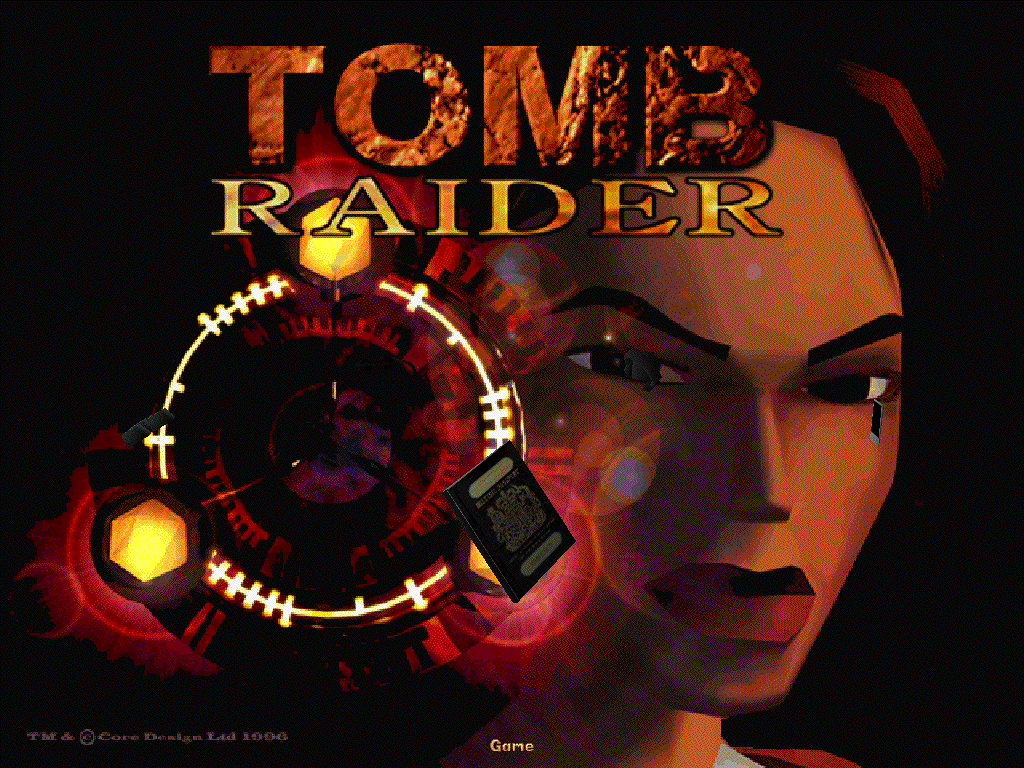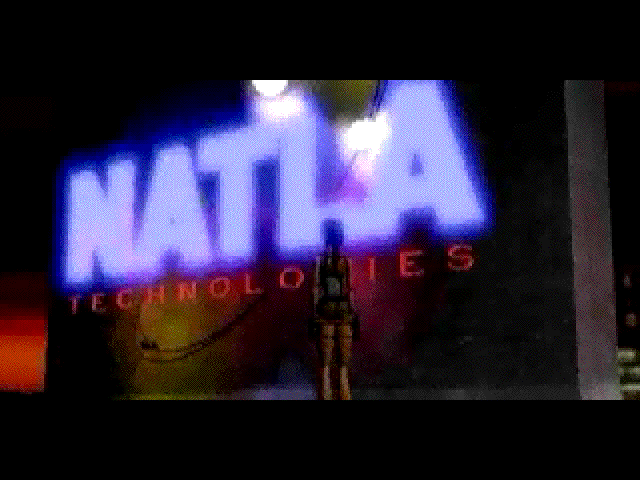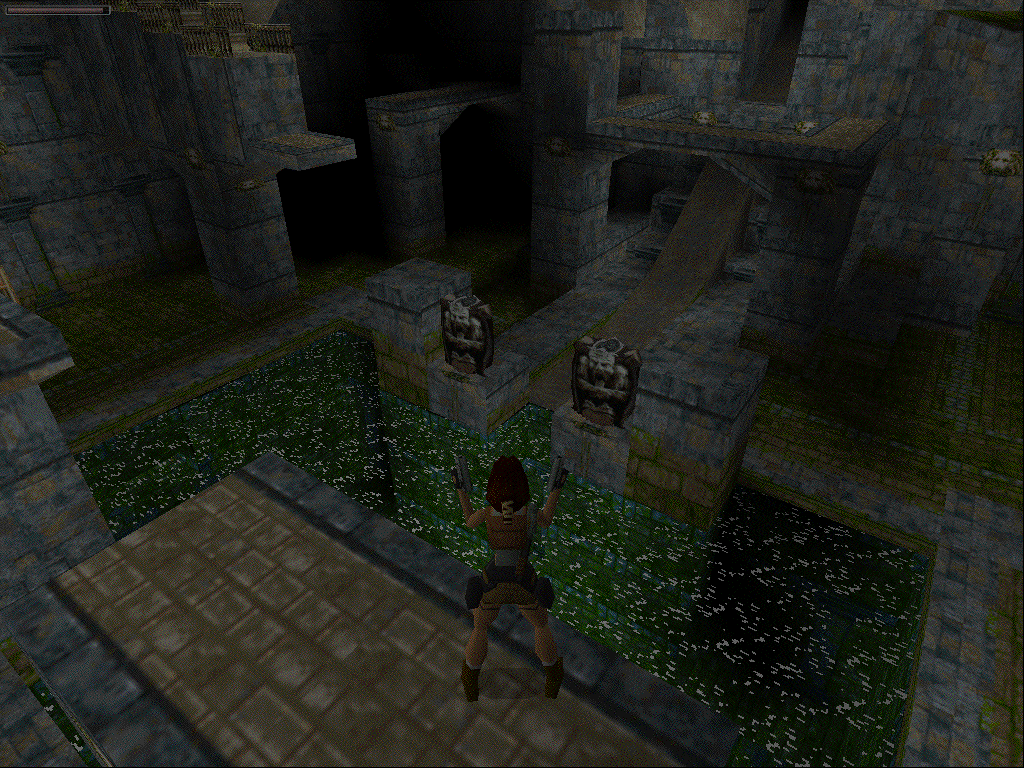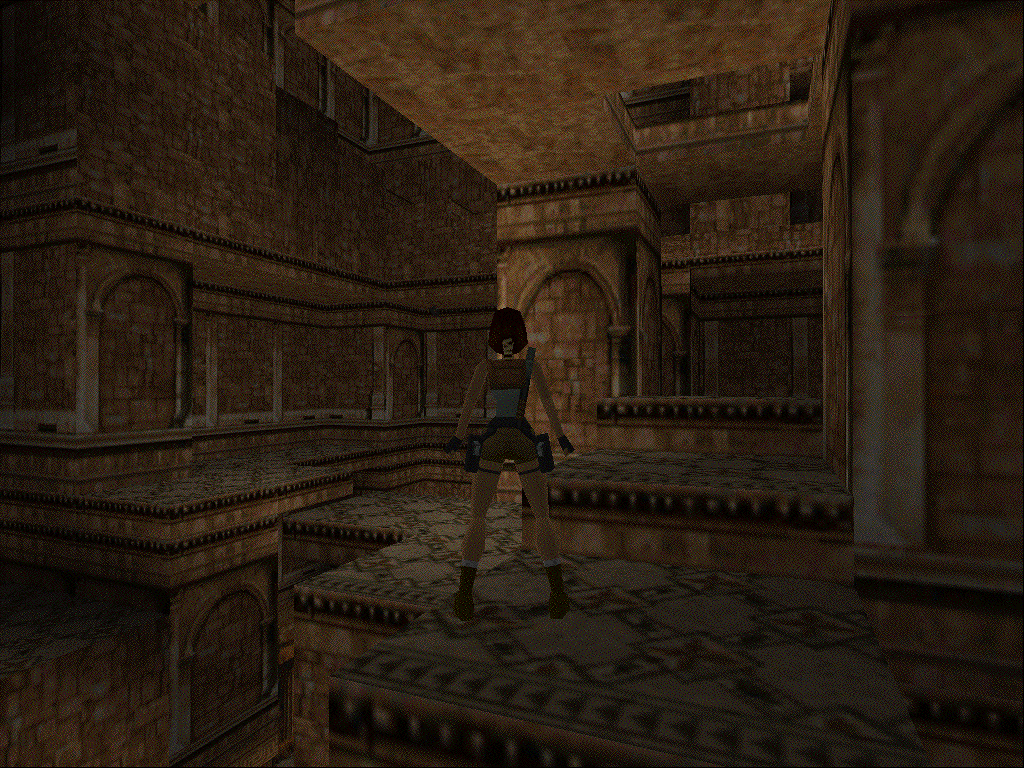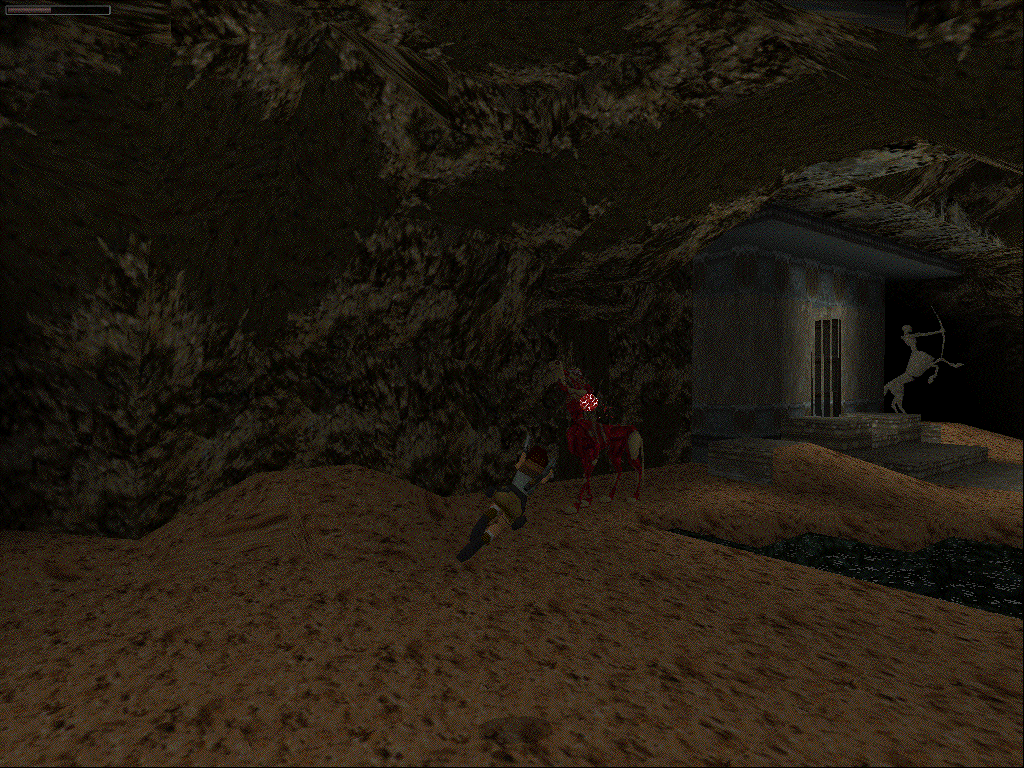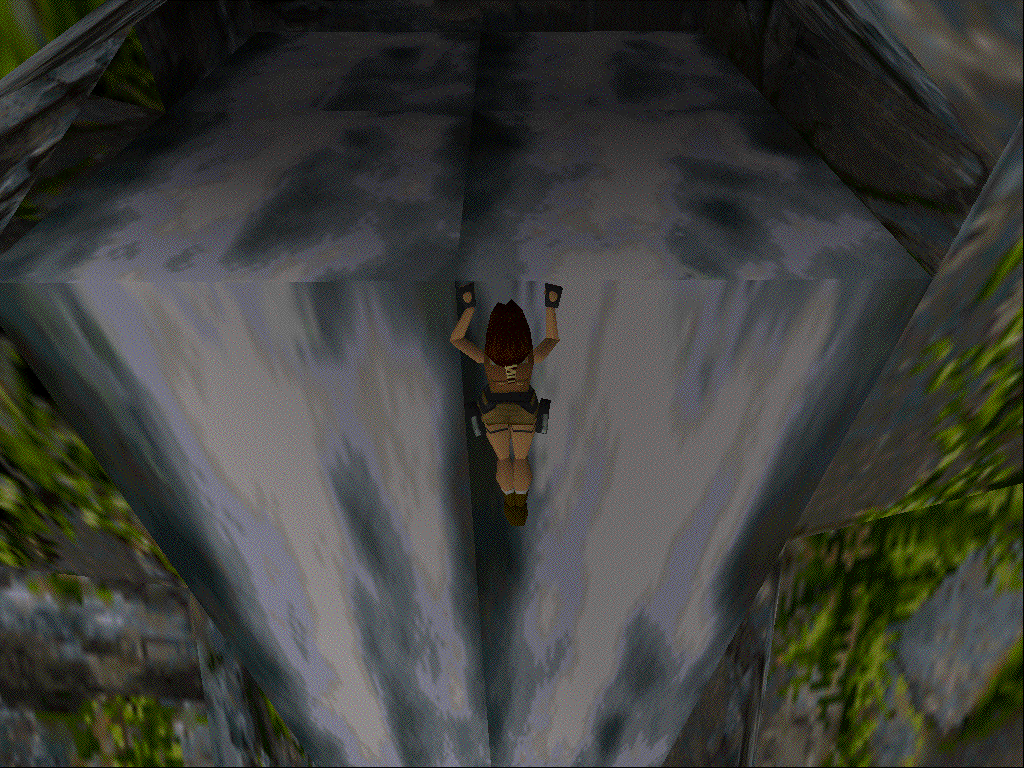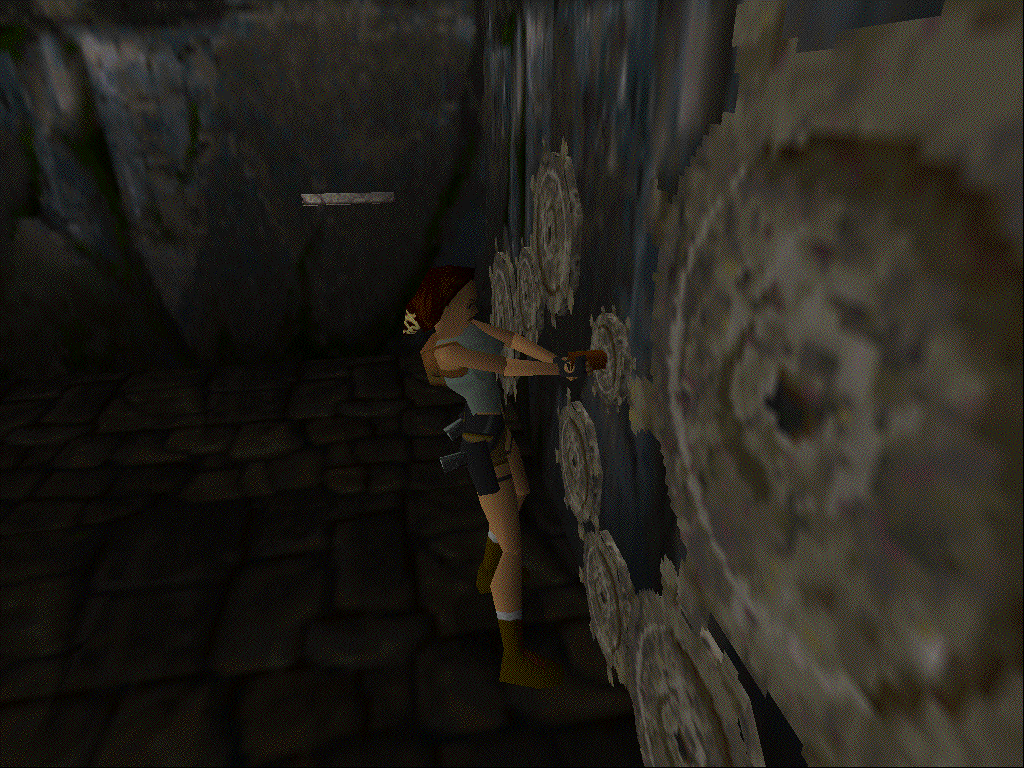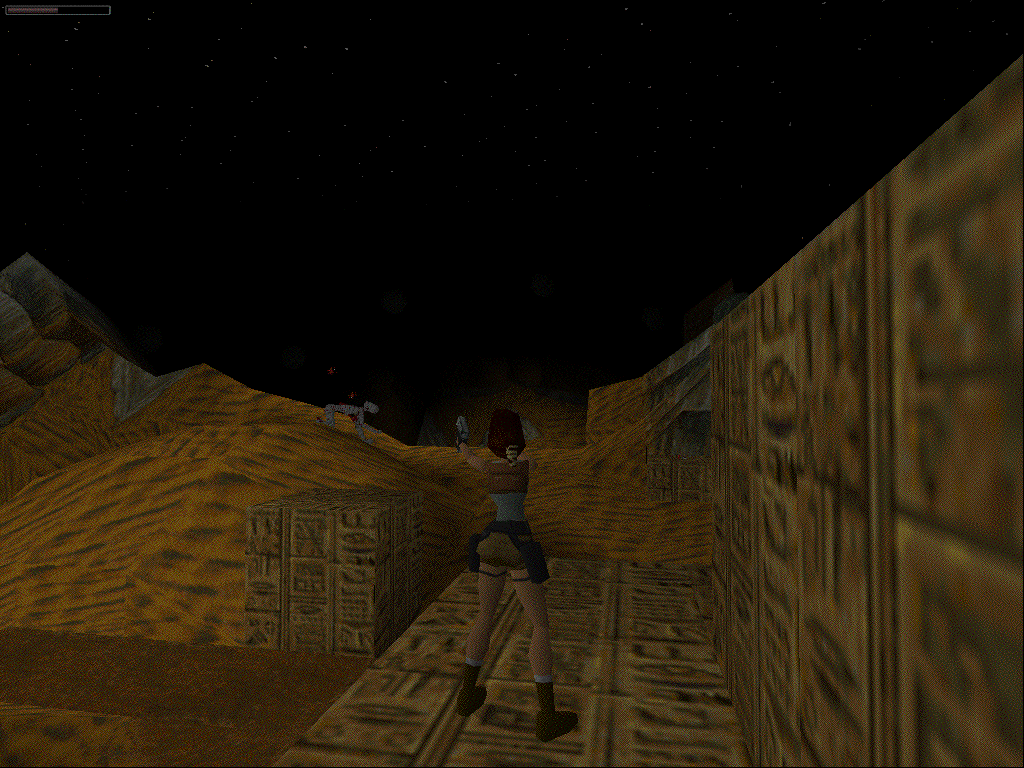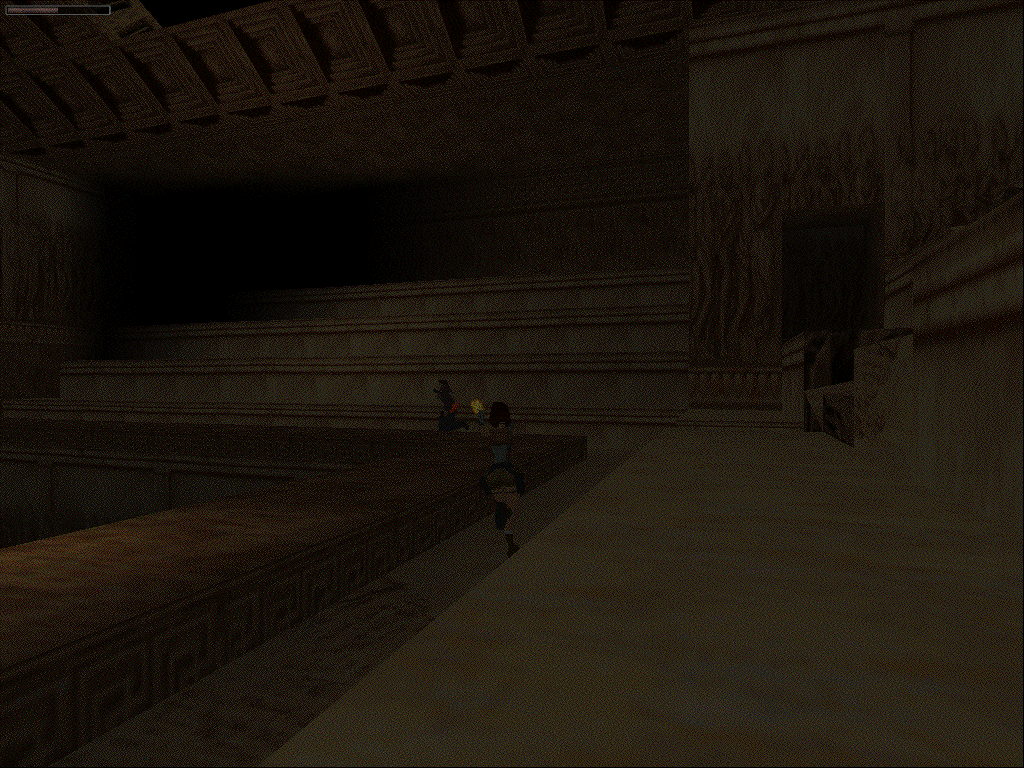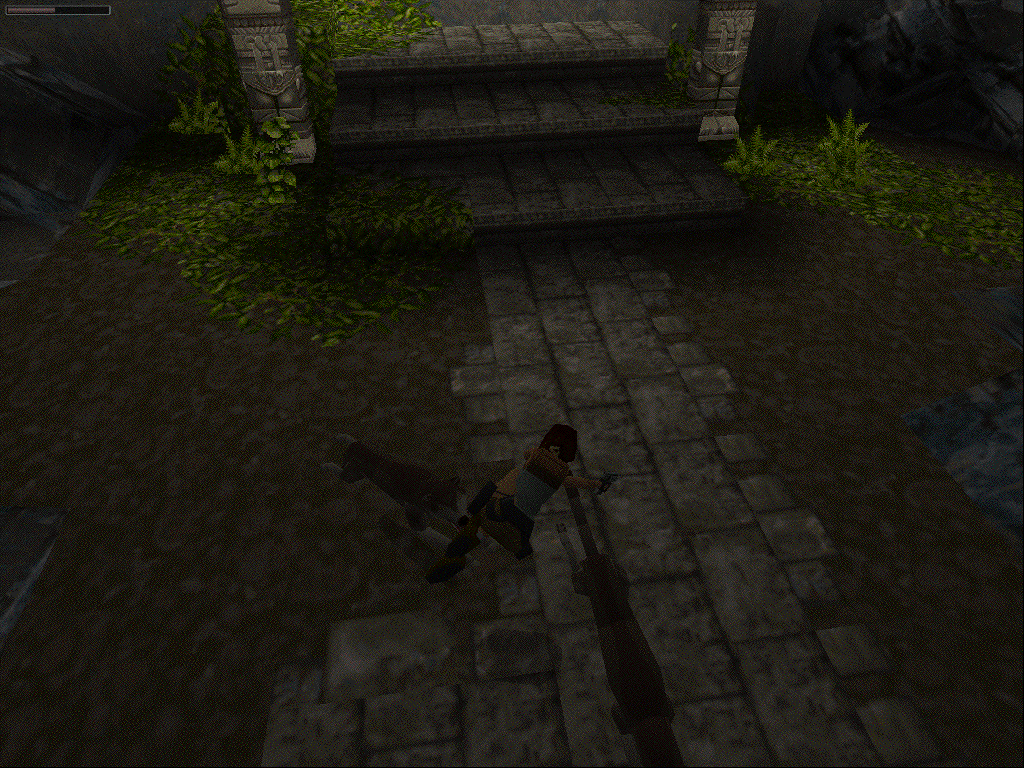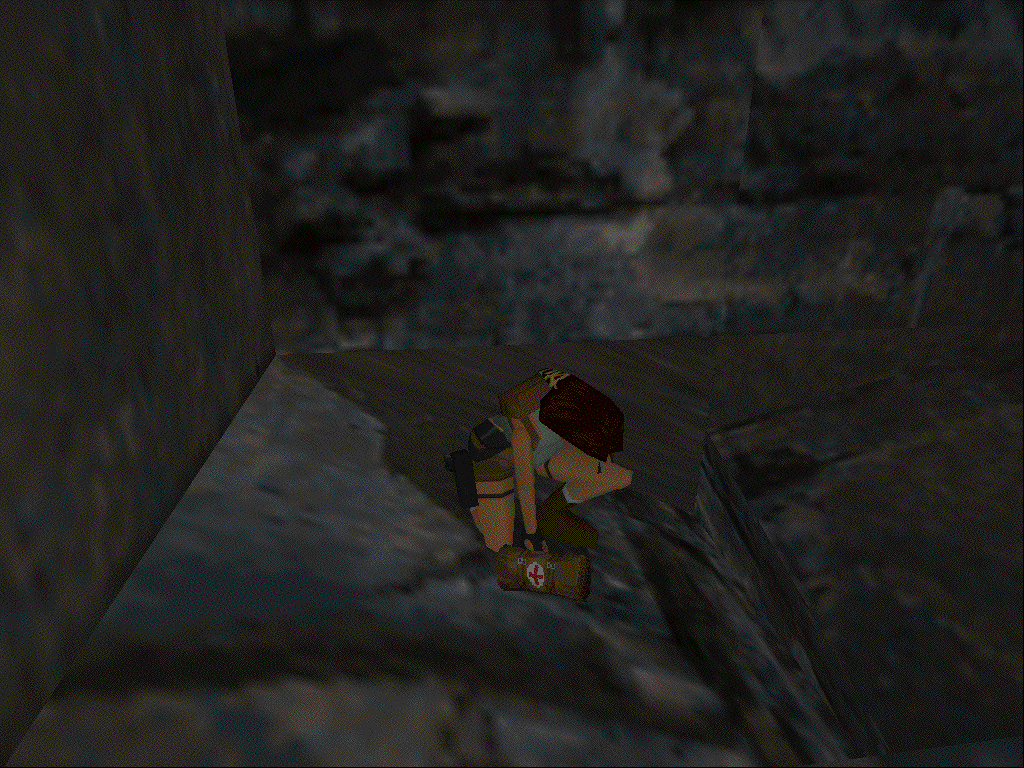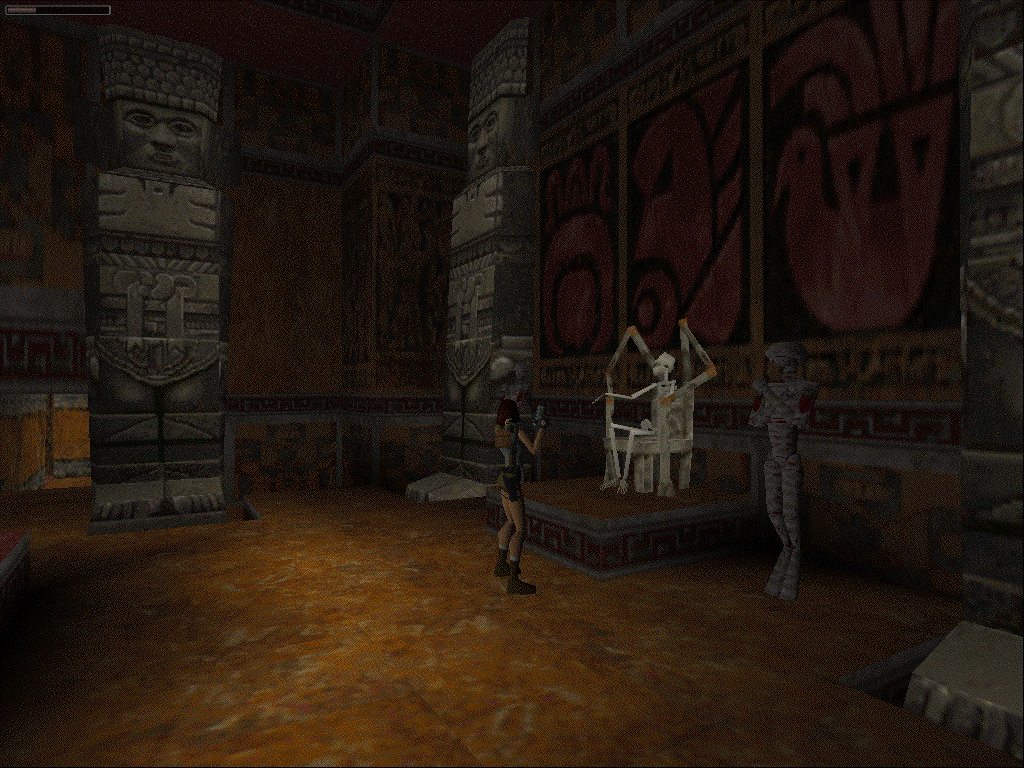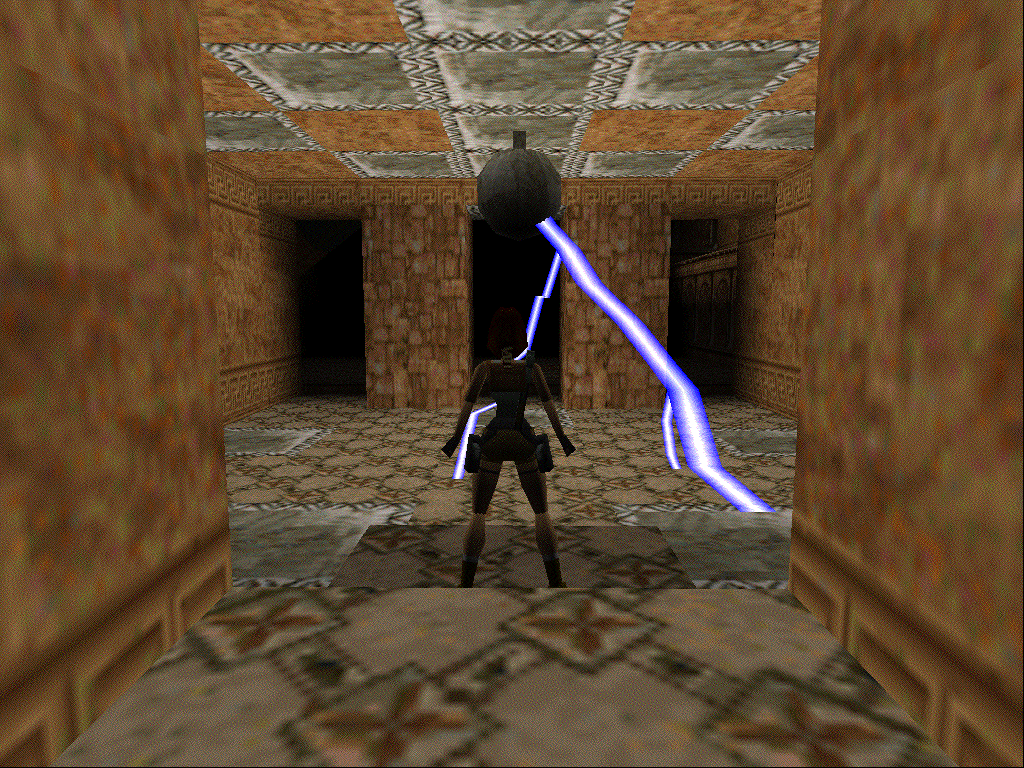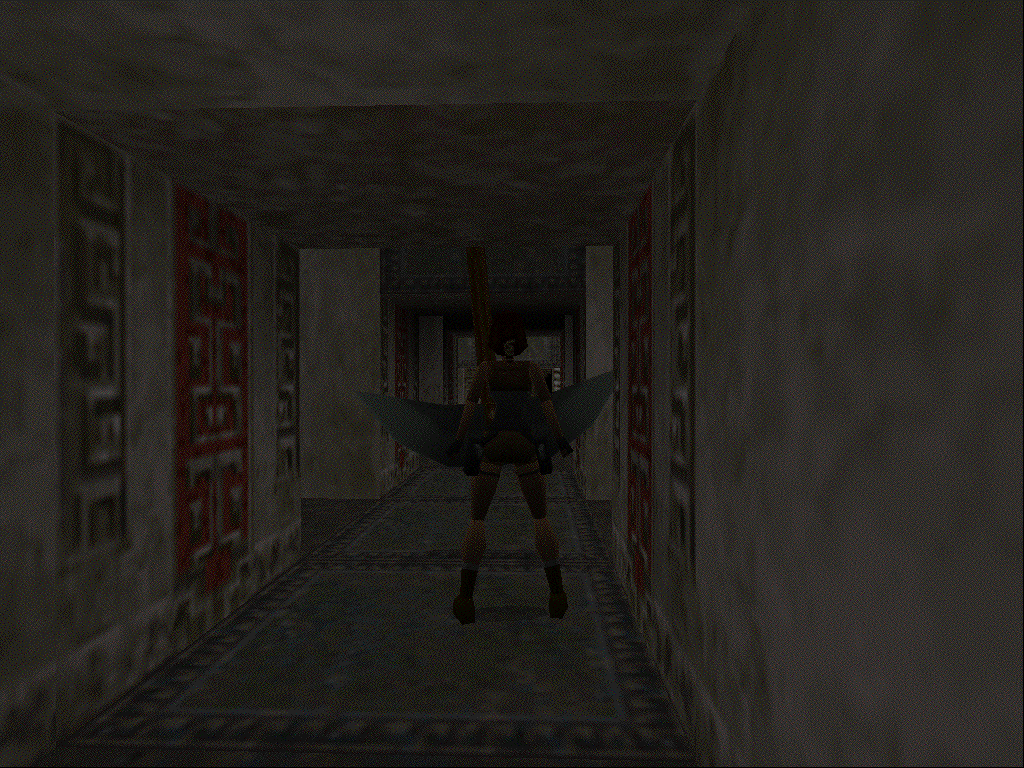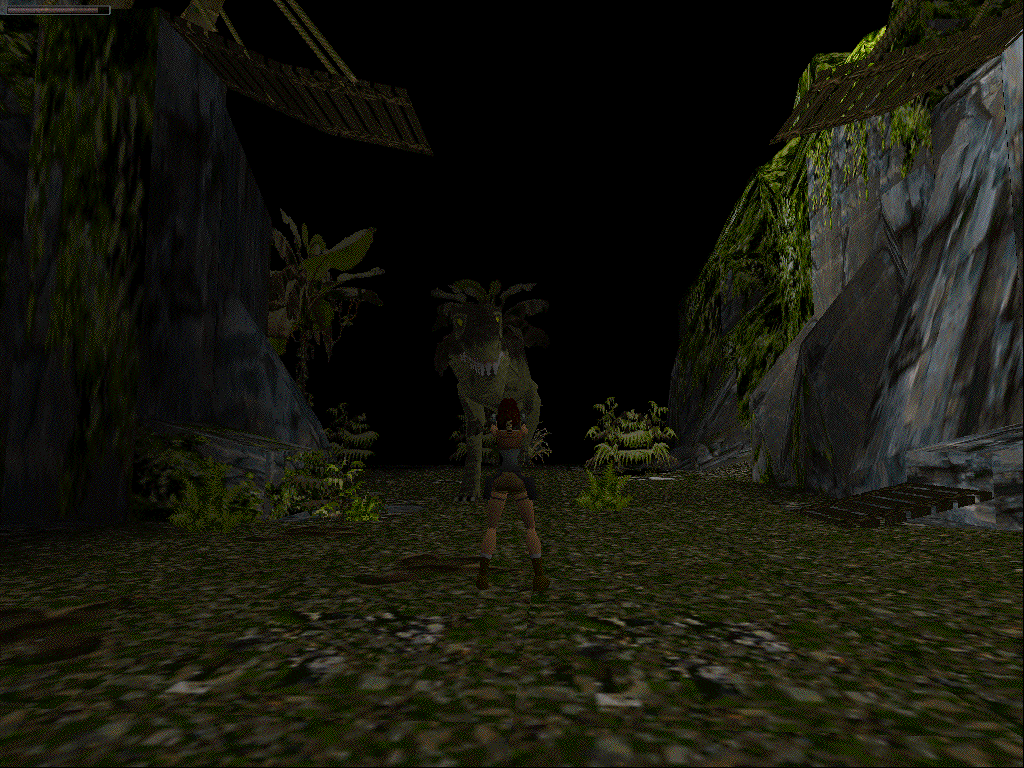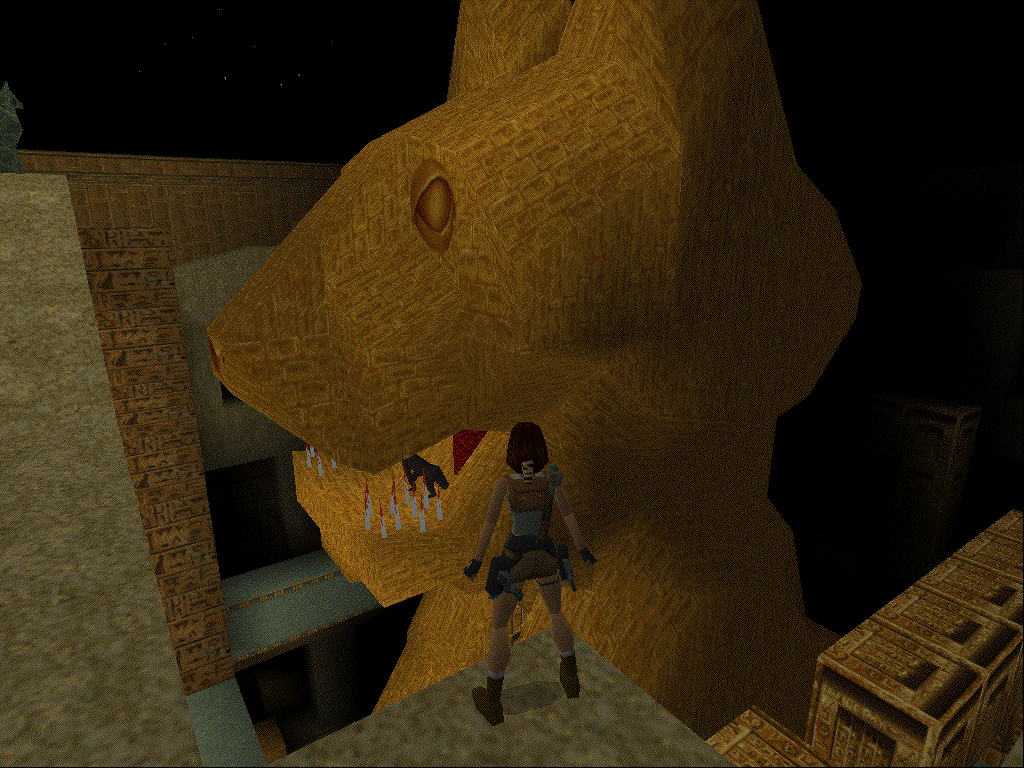Tomb Raider Gold – Core Design - 1996 - First time playing?: No, previously beaten on Sega Saturn
(Note: these screenshots are downscaled to better fit Radpage's site layout. Click on the screenshots to see them in their full resolution!)
Unique, ground breaking, a melding of multiple genres and gameplay styles into one in a fully 3D atmospheric world, by a small dev team at a time where so few had yet mastered polygonal graphics nonetheless. Tomb Raider is an absolute classic on any platform, be it the more popular PS1 and DOS ports, or the more obscure original Saturn release and this Mac port we're looking at today. There's not much to say about the port of Tomb Raider on Mac, it runs at higher resolutions than the DOS version and there's a voice clip of Lara saying "aha!" every time you pick an item up just like in Tomb Raider 2, but that's about it. I simply wanted another excuse to replay Tomb Raider and talk about what I love about this game. I love Tomb Raider, warts and all. It's definitely aged in a lot of regards and as a result is it's very hard to recommend to people more used to modern game design sensibilities, but if you are willing to overcome that steep initial difficulty as you adapt to the controls and general feel of the game, you're rewarded with a game that I honestly think there's still nothing else like.
Raised as an aristocrat with her life all planned out for her, Lara Croft's status quo was shattered at age 21 when a skiing trip went awry as her charter plane crashed in the Himalayas. Two weeks later she resurfaced, having learnt survival in the wilderness and making her way back to a village in one piece. What would have been a harrowing experience for others was a wake-up call for Lara. She came to understand how restrictive and suffocating her prior aristocratic lifestyle was and realised that she only truly feels anything when she’s exploring the world on her own. Lara rejected her heritage and travelled the world, researched ancient civilisations and made a living off of her research and writings of her findings. All of her exploits have now caught the attention of Jacqueline Natla, owner and CEO of the Natla Technologies company. Natla is seeking a mysterious artefact known as the Scion, a stone disc-shaped relic in three parts. Attempts to buy Lara’s services fall flat, as Lara puts it herself, she only plays for sport. Fortunately for both Natla and Lara’s interests, the Scion is deep in the uncharted subterranean tomb of Qualopec, the ruler of an ancient forgotten civilisation of which the ruins have been buried alongside his tomb. With an exciting new playground for Lara to explore, she takes the job.
Tomb Raider is a 3D platformer/puzzle game/shooter amalgamation that can be a lot more concisely described as “action adventure” and still get across the same concept, as vague as that sounds. The intent of the developers was to recreate the more grounded and realistic platforming style of Prince of Persia but take it into fully 3D explorable environments. Each of the game’s 15 levels has an end point to reach by jumping and climbing your way through rocky terrain, solving puzzles, finding key items and shooting your way through the occasional enemy. The pacing is much slower than 3D shooters like Quake or even 3D platformers like Mario 64, and intentionally so. It’s designed to be played cautiously, not rushing head-first into danger, instead anticipating where enemies might jump you and where traps could be triggered, as well as taking notes of your surroundings, relevant parts of the levels for later puzzles and branching paths to come back and explore later.
Starting with the platforming, much like Mario 64 you have a wide variety of different jumps performed via button combinations and timings to help you navigate the tombs. Starting off is a simple standing jump which has Lara jump straight up on the spot with her arms reaching for any ledge to grab onto, not covering much distance other than moving forward by 2 centimetres. From a standstill you can also jump forward, do a side flip to your left or right or do a backflip, depending on what direction you hold the arrow keys as you jump, allowing you to quickly move in directions you’d otherwise have to slowly turn around to run towards. Jumping while running will have you do a long jump, enabling you to reach platforms and grabbable ledges from a far distance that you can’t reach with a simple standing jump, though you need enough room to get a running start to be able to perform that long jump. Grabbing onto ledges is done by holding down the action key (which fires your guns if you have them drawn so make sure to holster them before attempting some rock climbing above a bed of spikes) and while holding onto a ledge you can either drop down by letting go of the action key, shimmy left and right with the left and right arrow keys or pull yourself up the ledge with the up arrow key. Finally, while these next three moves aren’t really jumps, they are still immensely helpful in both general manoeuvrability and setting up tricky jumps. You can press the roll key which causes Lara to do a quick somersault that ends in her turning around 180 degrees, giving you a quick method of turning around on the fly, and you can tap the down key while not holding the jump key to do a small backwards hop. You can also walk by holding down the walk key, causing Lara to move slower than she does during her full speed run and also prevents her from falling off ledges, allowing you to safely approach the edge of a platform without plummeting to your death.
Where these controls differ from Mario however is in the weight and wind-up of these jumps. Unlike the cartoon world of Mario where quick instantaneous acrobatics come with the territory, Lara is more human and as a result her attacks have wind-ups that need to be accommodated for. Lara’s jumping animation has her crouch a bit to ready the jump before her feet actually leave the ground, as opposed to Mario instantly rocketing into space the second you press the a button. This is a mild nuisance when performing jumps from a standstill, only a threat if Lara is being attacked by enemies and needs to get out of danger fast and can sometimes be a make-or-break factor during timed sequences, but where this needs to be watched out for the most is during the running long jumps. There’s still a wind-up to the running jumps, but unlike the standstill jumps, Lara doesn’t stop running even while she still hasn’t actually left the ground. Early on a common slip-up can be attempting a running jump only to have Lara fall down a cliff before the jumping animation plays out far enough for her to actually get airborne. The trick to long jumps however is that doing a single backwards top by tapping the down arrow key causes Lara to jump back the exact distance she needs to get a running start for a long jump. As such, walking up to the edge of a cliff, doing a single hop backwards and then holding the up arrow key to run forward while also holding the jump button will ensure you’ll get the furthest possible jump distance every time.
If your only experience with platformers is the likes of Mario, Sonic, or um, Monkey Shines, this probably sounds utterly dreadful. Those who have played the likes of Prince of Persia, Flashback, Blackthorne or my personal favourite, Abe’s Oddysee, are likely understanding where that earlier comparison came from by now. Like those games, the set-up of the jump and understanding exactly what your character is capable of and what jumps are suited to which situation is more important than any kind of Mario-esque precision platforming. Platforming is still tense, slipping up the timing can potentially result in doing the wrong jump or jumping too late and you’re prone to quick deaths if you fall too high as a result of bumping off a ledge you meant to grab onto, but it’s not the kind of game where you have to steer yourself in mid-air to land on a small platform at all. Platforming in Tomb Raider should be approached more as a puzzle, where you have to consider the length and utility of all of your jumps, what you can or can not reach safely and the best route through a labyrinth of blocks and spikes. The weight to the jumps feels good too which adds a satisfying feeling to mastering the platforming controls. The smooth flowing animations, the speed and physics of the jumps and so on all give this sense of the weight of a human being, especially when grabbing onto a ledge as Lara strains herself to pull herself up.
With that mention of puzzles, let’s talk more about that aspect of Tomb Raider. Other than the platforming mazes, there’s a lot of the other usual standards, block puzzles, key puzzles, switch puzzles and so on. It can feel a bit bog-standard by today’s standards, pushing large blocks around and “use x on y” style inventory puzzles are somewhat done to death, but Tomb Raider definitely has a few tricks up its sleeves when it comes to how these get implemented in creative ways. The main level-spanning puzzle in Palace Midas is really the stand-out in this regard, and anyone who has played the game before immediately knows why, while also some of the puzzles in Egypt stand out by having large chunks of the level change depending on actions you take, even having one puzzle that you find at the start of one level but don’t actually go back to and solve until two levels later, leaving you wondering how everything will piece together and how that strange element you saw ages ago will eventually become of use in the bigger picture of progressing through the game. Many of the puzzles are on a large scale that involves exploring the entire level, which makes it especially cathartic when you’re completely overwhelmed upon entering a massive non-linear stage and then figure out the function of every aspect of the level design and make your way to the exit. It sounds intimidating, but just by exploring naturally and trying to find items you’ll end up naturally understanding more and more.
Now, the last aspect of gameplay we’re left with to explain is combat. This is actually a much smaller aspect of classic Tomb Raider than you might expect. Tomb Raider’s more recent instalments developed by Crystal Dynamics have much more bombastic Hollywood-esque action shootouts with dozens of enemies in groups for you to mow down all on your own. Core Design's Tomb Raider meanwhile will have long stretches of silence interspersed with occasionally being jumped by enemies. Levels in Tomb Raider tend to be about an hour long and while there is one instance of a level with 43 enemies in it, many others only have around 15 enemies in them or even less, while still being about an hour long. Shootouts are quick and panicked and don’t last too long, so shooting really does not take up much of your playtime here. This is maybe for the best since I feel combat is the most awkward aspect of Tomb Raider. The platforming and climbing and such, yeah it feels a bit unnatural at first but you adapt to it and it’s reliable and perfectly suited for the level geometry and designs that the game has for you to jump your way through. Shooting, I can’t really say the same about. Enemies are fast and run straight for you the second they see you and they’re extremely difficult to outrun. Many of them are faster than Lara and it’s difficult to move out of the way when you have the previously mentioned sluggish and heavy movement controls and you’re also getting constantly thrown left and right by rabid wolves mauling your limbs. If you have enough open space you can sideflip left and right to move out of the way of attacks, but if you sideflip into a wall you’re going to get stunned and be open for more mauling, all the while the camera turns itself inside out and shakes all over the place and shows the worst possible angles and makes it impossible to tell what is happening. Then you start fighting guys aimed with guns and then damn, all the flips in the world aren’t going to get you out of the way of their perfect aim hitscan weapons.
So combat, kind of a clunky mess I still struggle with to this day, even after beating both Tomb Raider I and Tomb Raider III twice each. In spite of that however, it actually does add something to the game as a whole and I’m glad that it’s here. What combat adds of value is pacing, tension and elements of survival and resource management. Knowing that someone could be around the corner at all times keeps you alert and keeps a sense of peril even when nothing is happening, and that style of thinking is actually rewarded. Something I found myself doing often was thinking as I made my way through seemingly empty caverns, “if I was suddenly attacked here, what would my best move be?” For instance, if entering a narrow corridor from a larger room, it’s likely best to backflip back into that larger room if you get attacked, that way you have more space to dodge and you can also get some shots in while backing up, as Lara is a master of perfect 100% accuracy aim with pistols even in mid-air while upside down. Ok, maybe I lied earlier, classic Tomb Raider is also sometimes a little Hollywood with its action, but those moments of sick gun-fu are the exception rather than the rule due the controls and sudden attacks making it so easy to get flustered and caught off guard. The rare moments when you’re in full control as a result are immensely satisfying and a wonderful payoff for your thinking ahead throughout the game as a whole.
Sometimes however, the game will put you in a situation where it really feels like there’s no way past an enemy other than fighting directly head-on, at which point it might be time to bring out some bigger guns. Your starting weapons are Lara’s twin pistols, reliable, accurate and decently fast-firing, but the shots are pretty weak and often unlikely to kill your opponent before they get in range to attack you. The pistols however have infinite ammo, making them a constant in your arsenal as an option that’s always available, even if it’s far from the most ideal one for a lot of cases. For higher damage you might want to consider the shotgun. It provides the strongest shots of any of your guns especially at close range, but has a slower reload time and very stingy ammo. How stingy? A box of shotgun ammo only gives you two shells, and most of these ammo boxes have to be found in obscure secret areas, really limiting your usage of the gun. Of course, as mentioned earlier, it’s not like there’s heaps of enemies in the game, so if you go out of your way to explore you do have enough ammo to take out plenty of especially troublesome enemies in awkward ambush spots, at least after abstaining from using it in the earlier levels. The other two guns are the magnums and uzis. I do think that these guns feel a bit too similar, one of them is basically the pistols but with a faster firing rate and the other one is the same but with an even faster firing rate. I personally would have preferred one of these guns to get cut and replaced with maybe an explosive weapon or something else that feels different from the rest. Nonetheless, ammo for these guns, while still somewhat hidden, is far more plentiful than the shotgun ammo and you get them much later in the game, giving you more freedom to use them frequently and helping out by keeping up some rapid fire damage dealing.
In addition to ammo, the other items to keep an eye out for are medkits which you use to heal yourself. The more common small medkits heal 50% of your max health while the large medkits are a full heal. When you finish a level you’re also fully healed for free before starting the next one, but other than that the only way you can heal is by using those medkits, which can be stressful since they’re a finite item. There’s only so many of them in the game total and like the ammo boxes they tend to be fairly well hidden too, though the small medkits are more often placed in the open to be easily found. It’s definitely intimidating but I wouldn’t worry too much about using medkits as you need them. Tomb Raider is far from an easy game, it still has some nasty deathtraps and sudden “gotcha” instakill scenarios, but from what I’ve played of the classic games it’s by far the most generous with keeping you stocked up on medkits, I had over 30 of both small and large medkits stocked up by the last level. Tomb Raider II throws a lot of stronger gun-wielding enemies at you very early on resulting in inexperienced players burning through medkits at a much earlier point, while Tomb Raider III is just pure unrestrained sadism and hatred (oh boy, when we get to reviewing that one for Radpage…) which leaves Tomb Raider I as the clear entry point for the series. Yes, I know it has the “worst” graphics, but don’t let that trick you into thinking that means it’s the most inaccessible and dated, I swear you’ll forget the fact that Lara’s character model doesn’t show her ponytail after like 30 minutes.
When looking at Tomb Raider as a complete package, as opposed to discussing the individual aspects of the gameplay, there’s so much I have to gush about. While many of these mechanics are clunky on their own, they all fit together in a cohesive way that works beautifully for the style of game Tomb Raider is trying to be. The atmosphere is absolutely superb, there’s that sense of danger and knowing that death can come extremely quickly at any moment as I mentioned before, but there’s so much quietness between all of that for you to soak in these forgotten worlds contained within these tombs. Music is minimal but the game is rarely entirely silent. You’ll hear echoes vibrating through the caverns constantly, leaving you to wonder if it’s simply the sound of a water droplet, the sound of movement caused by some living creatures deeper within, or perhaps even some remnants of ancient technology and machinery, still automatically running to this day. The environments themselves, primitive as the graphics may be, are rich with environmental storytelling and say plenty about the civilisations that built these ruins and how they relate to Lara’s current quest for the Scion without even having to say any actual words. Plenty of the reveals of the lore surrounding the game aren’t done in cutscenes but simply through finding hints for them by taking in your surroundings and thinking about what they mean, while the rare infrequent and short cutscenes that do show up serve to give some extra context to those things you found and will find in future levels as well. Replaying it for this review, I ended up discovering little bits of world building that completely flew over my head during my first playthrough, thanks to having further context of what happens later in the plot.
And speaking of this kind of visual world building and storytelling, I absolutely adore Lara in this game. Later Tomb Raider games like III and Chronicles are unfortunately bad about making Lara out to be a murderous and selfish thief concerned only with her own personal gain, but she’s wonderful in her debut. While the cutscenes absolutely show aspects of Lara’s character, her cunningness and pursuit after the Scion primarily out of fascination about what it could mean for her understanding of the world’s history as opposed to any kind of monetary gain, Lara ends up getting the most characterisation simply through gameplay. Lara is characterised in a way that’s only possible through the medium of games, the style of this game and the kind of thought process and play style that this game requires in order to succeed in are what defines Lara as a character, possibly not even intentionally but simply as a byproduct of how this unique genre-melding game plays out. She’s skilled, intelligent and a damn good shot with a pistol for sure, but she is also incredibly aware that she is a human, and thus she is mortal and she is fragile as all humans are. A spike piercing her vitals is fatal. A single wolf can be enough to severely wound her. Heck, Lara can even break her neck and die instantly if you’re foolish enough to attempt to use the dive jump for diving into water above solid ground. As a result, she is cautious and thinks ahead every step of her adventure. She rations her supplies. She doesn’t take leaps of faith and only jumps once she’s confirmed it’s something she can make and positions herself perfectly. She has an escape route planned in advance for any encounter so that she can strike back on her own terms and if she sees a place where she can get a clear shot while staying hidden she will exploit it. Every device, mechanism and room she will treat with suspicion, knowing from experience that anything could be a death trap guaranteeing a brutal death unless she takes in her surroundings and knows what to expect first. She uses every bit of her knowledge of history, archaeology and mythology to assist her in survival and solving the many puzzles left behind by the ancient civilisations she is so fascinated by. Why does she do it when it’s so high risk? Because it’s fun. Tomb Raider is fun.
In terms of tone, it’s the subtle aspects of Tomb Raider I appreciate the most. The wordless environmental storytelling and characterisation is generally more engaging to me than the often especially corny dialogue and voice acting, from the exaggerated American accents of Natla and her right hand man Larson, to the ridiculous bossfight against a teen on a skateboard dual wielding uzis while quoting Taxi Driver. The early appearance of an actual T-Rex for the first boss is also incredibly goofy, but ended up being something I actually liked surprisingly as it felt like it added to how frozen in time this ancient underground abandoned civilisation is. It helps that the pacing and atmosphere remains superb even in levels with these goofier elements, enough that a velociraptor sneaking up on me after I had already dealt with the T-Rex was enough to make me genuinely jump in a way that even most horror games fail to do to me. The game may be slow and clunky and frustrating in a lot of ways, but those aspects also are what makes so much of it work, thanks to the game being designed around those limitations while also having a surprising amount of options and depth in terms of different jumps and routes and weapons and so on. I wouldn’t blame you for a second if you play Tomb Raider for 10 minutes and decide to never touch it again, but I’ll always love Tomb Raider a ton, even if it took a while for me to come around to it.
Want to play Tomb Raider? Yeah, you’re not short of options. DOS/PC, Saturn, PS1, PS2 or PS3 with backwards compatibility, Mac, iOS or Android, even the Nokia N-Gage, you’ve got plenty of choices. Take one of the computer versions if you want a gentler introduction, the PS1 and Saturn versions have a restricted limited saves system while in the PC and Mac ports you can save anywhere at any time, a feature that future Tomb Raider games on PS1 adopted as well. Also, while the PC and Mac ports are still capped to 30fps, it’s a far smoother 30fps than you get from the console versions which further helps with timing jumps. In addition, PC and Mac has access to Tomb Raider Gold, which includes an extra four levels to play through as part of the Shadow of the Cat and Unfinished Business expansions, both of which aren’t available on consoles. The expansion levels aren’t anything to write home about, with very few new assets and somewhat samey environments that you’ve mostly seen in the main game, but they’re still well designed and a nice extra to go alongside the main game.
- Page written by MSX_POCKY, 15th April 2023
